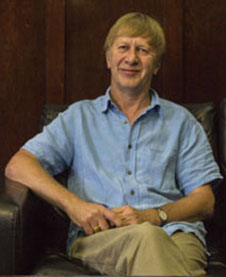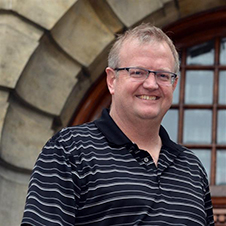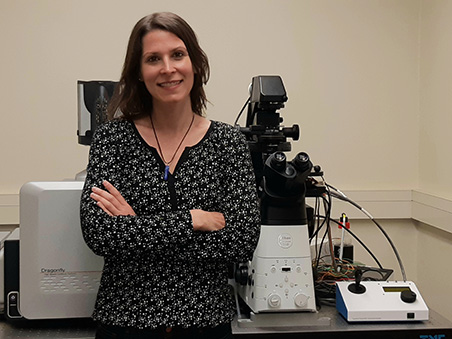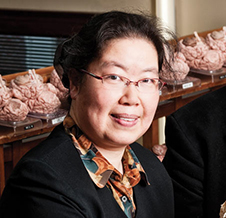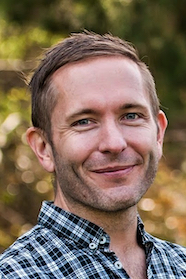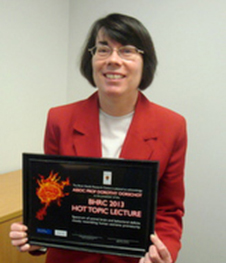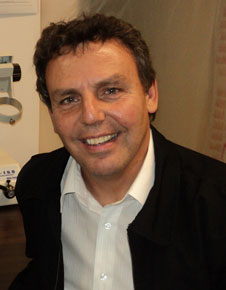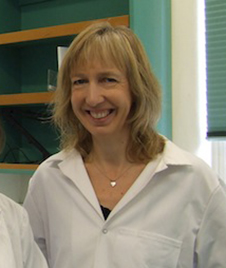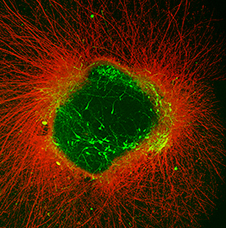 The Neuroscience Research Group (NRG) comprises thirteen laboratories whose members are also part of the Brain Research New Zealand Centre of Research Excellence (CoRE) and the Centre for Neuroendocrinology (CNE) .
The Neuroscience Research Group (NRG) comprises thirteen laboratories whose members are also part of the Brain Research New Zealand Centre of Research Excellence (CoRE) and the Centre for Neuroendocrinology (CNE) .
Our research focuses on:
1. Understanding brain structure and function, including the mechanisms of brain health, disease and repair.
2. Understanding neurological disorders including Alzheimer's, ADHD, Ataxias, Autism, Cerebral Palsy, Epilepsy, Fetal Alcohol Spectrum Disorder, Parkinson's, Schizophrenia and Stroke and identifying new biomarkers and developing new treatments for these disorders.
3. Understanding how the brain controls hormone levels and how hormones control brain function.
We also engage in raising awareness of brain health and disease in schools and to the general public. We are committed to developing active educational links with the community.
Principal Investigators (PIs)
Professor Greg Anderson
The Anderson Research Group are focused on the regulation of fertility by nutritional factors (the hormones leptin, insulin and ghrelin) and the mechanisms by which the brain peptide RFamide-related peptide-3 (RFRP-3, a.k.a. gonadotrophin inhibitory hormone) regulates reproductive activity and anxiety in mammals.
The 'big picture' goal is the development of new and improved treatments for infertility and anxiety-related disorders.
Greg is also a member of the 'Reproduction, Genomics and Development Research Group'. His research expertise include: transgenic mouse models, behavioural phenotyping, in vivo and in vitro cell signaling assays.
Associate Professor Stephen Bunn
Stephen's major research interest is in the neuroendocrinology of stress.
Current research focuses on two major areas. First, understanding the complex regulation of the adrenal medullary chromaffin cell, specifically how it regulates its secretory output of catecholamines and peptides in response to multiple stress-activated inputs. Much recent work has been directed at understanding how cytokines interact with this stress response.
Our second major interest concerns the role of another cytokine, prolactin, on the stress axis. Specifically we are interested in how stressors alter prolactin secretion from the pituitary and what role this prolactin then plays in stress adaptation under different physiological states.
Stephen's research expertise include: neuronal cell culture, immunocytochemistry, confocal microscopy and immunoblotting.
Associate Professor Yusuf Cakmak
Our major interest is the neuromodulation of internal organs and the brain structures to modulate their functions and blood flow. We focus on the effects of different frequencies of non-invasive electrostimulation on internal organs blood flow to increase and decrease the blood flow.
We had six neuromodulation related Patent Cooperation Treaties (PCTs) and we are interested in investigating more novel non-invasive stimulation techniques to normalize the neuronal network functions and alleviate the symptoms of neurological diseases.
Southwest Research Institute (Texas) is producing a prototype for one of our PCT related neuromodulation devices for internal organ blood flow modulation. Inventram company supports our Parkinson's Disease related biomedical device clinical trials.
We are also researching for Interactive Virtual Reality (Hand and Forearm Muscular Avatar project is the recent one) and 3D image processing as a treatment modality, teaching and as a diagnostic tool.
Yusuf is also a member of the 'Clinical Anatomy Research Group. His research expertise includes neuromodulation and electrostimulation.
Professor Dave Grattan
The Grattan Lab are interested in the neuroendocrine functions of the hormone prolactin, and in particular, the role of prolactin in the neuroendocrine and neurobiological adaptations of the maternal brain.
Specific interests include the control of appetite and body weight during pregnancy and obesity, plasticity in oxytocin neurons during late pregnancy and lactation, and the role of prolactin in changes in mood and behaviour in the post partum period.
Dave is one of a number of researchers whose work combines neuroscience with reproduction and developmental biology, and who are members of both the 'Neuroscience Group' and the 'Reproduction, Genomics and Development Research Group'.
Dr Laura Gumy
Laura is Group Leader and Academic Lead in light microscopy at the University of Otago. The goal of her research is to determine the molecular mechanisms that regulate intracellular transport processes and cytoskeletal remodelling in neurons. These are fundamental pathways that when impaired can lead to neuronal dysfunction or nerve regeneration deficits. Her research is interdisciplinary and relies on combining high-resolution live cell microscopy and advanced quantitative image analysis, biochemical and genetic methods for the identification of molecular interactions with a role in neural repair. Work from the Gumy lab has shown how the regrowth of neuronal axons depends on local translation of mRNAs and the regulation of microtubule dynamics. Recent projects are centred on investigating the mechanisms enabling the sorting and long-range transport of vesicles into axons that are necessary for neuronal growth.
Professor Ping Liu
Our main research areas are:
- Neurobiological basis and intervention of brain aging, Alzheimer's disease and schizophrenia
- Biological basis of learning and memory.
We have been focusing on arginine metabolism, and the functional role of agmatine and its therapeutic potential.
Professor Beulah Leitch (Chair of the Neuroscience Research Group)
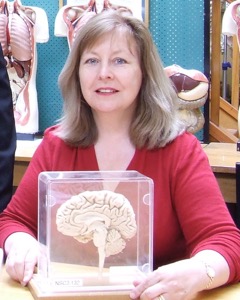 The Leitch Group research interests are in cellular and molecular neuroscience. Our research focuses on the structural and functional development of neurons and their synapses; also changes occurring at synapses during aging and in various brain disorders. We are particularly interested in the impact of altered expression of receptors and their trafficking proteins at synapses.
The Leitch Group research interests are in cellular and molecular neuroscience. Our research focuses on the structural and functional development of neurons and their synapses; also changes occurring at synapses during aging and in various brain disorders. We are particularly interested in the impact of altered expression of receptors and their trafficking proteins at synapses.
Projects include investigations into: the effect of AMPA receptor deficits in corticothalamic networks as a result of a mutation in a TARP trafficking protein in the Stargazer model of absence epilepsy; changes in receptor expression at synapses in the maternal immune activation model of schizophrenia; calcium channels in normal and diseased brain; agmatine and age-related cognitive decline; and the effects of BDNF deficits on synaptic plasticity in the cerebellum.
We also have research interests in the detection of newly synthesized receptor proteins at dendritic locations and synapses in collaboration with the Max Planck Institute in Brain Research, Frankfurt Germany. This project uses new methodologies to detect recently synthesized protein molecules at synapses, from their pre-existing counter-parts, with ultrastructural resolution. This research will lay the groundwork for studying whether defects in local protein synthesis contributes to synaptic dysfunction underlying various brain disorders such as Alzheimer's disease.
“Our brain cells (neurons) talk to each other at specialized connections called synapses. Understanding the mechanisms underlying synaptic dysfunction is fundamental to understanding many brain disorders”.
The Leitch Research Group expertise includes: electron microscopy (EM); immmunogold-cytochemistry; molecular biology; immunoblotting; immunocytochemistry; confocal microscopy; high-resolution imaging techniques; neuronal cell culture and electrophysiology.
Dr Jerin Mathew
Jerin is a chronic pain researcher with a special interest in pain neuromodulation. His primary research aims to understand the 'brain-pain' mechanisms driving chronic musculoskeletal (MSK) pain and improve clinical pain outcomes through electroencephalography (EEG) based neurofeedback (Brain wave training). Jerin endeavours to further investigate structural and functional changes associated with MSK pain conditions and test the potential of neurofeedback as an intervention for managing associated pain experience.
In addition to his interventional health research, he also incorporates various imaging techniques (Ultrasound, Source localised EEG neuroimaging, MRI etc.) to better understand the relationship between the MSK system and the brain.
His key research areas of interest are:
- The biopsychosocial model and chronic secondary MSK pain conditions
- EEG neuroimaging
- Neurofeedback and Neuromodulation
Dr Rob Munn
How do we remember? This faculty, so central to our sense of self, has been the subject of study for decades. Rob's research programme uses a variety of elecrophysiological and optical techniques to study the function of the hippocampus and associated rhinal cortices to address this fundamental question.
Professor Dorothy Oorschot
The structure and function of the normal or hypoxic basal ganglia is the main focus of our research. In the normal basal ganglia, neural circuits are being researched to test hypotheses on the cellular basis of movement and learning. For the hypoxic basal ganglia, treatments (eg. hypothermia, stem cells) are being researched to determine whether striatal neurons can be rescued or restored after hypoxic-induced death.
A new animal model of brain injury in infants born extremely prematurely has been developed. This model was published in the prestigious Journal of Neuroscience in 2013. Further characterization of this model and investigation of treatments to rescue the brain injury and behavioural deficits are underway.
Dorothy is also an member of the 'Reproduction, Genomics and Development Research Group'. Her research expertise includes immunocytochemistry, stereology, electron microscopy, behavioural phenotyping, tissue culture.
Oorschot Lab (part of Basal Ganglia Research Group)
Professor Louise Parr-Brownlie
Ngāti Maniapoto, Te Arawa
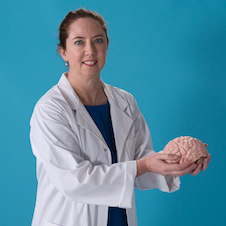 Professor Parr-Brownlie has internationally recognised expertise in understanding how activity in the motor thalamus, motor cortex and basal ganglia control normal movements and is altered in Parkinson's disease. Her team uses a combination of optogenetic stimulation, electrophysiological recordings, electron and confocal microscopy to investigate brain function and structure. They have applied optogenetic stimulation to determine if there are better places and ways to stimulate the brain to improve movements in models of Parkinson's disease.
Professor Parr-Brownlie has internationally recognised expertise in understanding how activity in the motor thalamus, motor cortex and basal ganglia control normal movements and is altered in Parkinson's disease. Her team uses a combination of optogenetic stimulation, electrophysiological recordings, electron and confocal microscopy to investigate brain function and structure. They have applied optogenetic stimulation to determine if there are better places and ways to stimulate the brain to improve movements in models of Parkinson's disease.
Professor Parr-Brownlie has extended her research programme to:
- Examine anatomical and physiological changes in the brain associated with chronic pain and
- Investigate Māori community perspectives of neurosurgical approaches to treat neurological disorders and traumatic brain injury.
Professor Parr-Brownlie is the Co-Director of Ageing Well National Science Challenge. She has been an invited speaker at prestigious conferences in the United States, such as Howard Hughes Medical Institute (Janelia), and Gordon Research Conferences. She is the Deputy Chair for the Neurological Foundation of New Zealand Scientific Advisory Committee, on the Māori Advisory Board for Brain Research New Zealand – Roro Rangahau Aotearoa, Centre of Research Excellence, and is the Secretary of the International Basal Ganglia Society Council.
Basal Ganglia Research Group Profile
Brain Research New Zealand – Roro Rangahau Aotearoa, Centre of Research Excellence
Professor Louise Parr-Brownlie's full profile including teaching, staff, and funding
Professor John Reynolds
The primary focus of the Reynolds' lab is on learning and movement generation processes in the basal ganglia and cerebral cortex.
In the basal ganglia the emphasis is on unraveling the normal role of dopamine in learning and memory in vivo. Normal functioning of this process is critical to our ability to learn and perform new skills, whereas dysfunction of dopamine cells and their basal ganglia targets underlies the pathophysiology of brain disorders such as Parkinson's and Huntington's diseases and addiction.
Their most recent work is focused on investigating synaptic plasticity processes in the cerebral cortex and the mechanisms of invasive and non-invasive stimulation therapies, and taking a translational approach to their application to stroke recovery.
John's research expertise include electrophysiological recording, molecular biology, immunohistochemistry and behavioural analysis.
Reynolds lab (part of Basal Ganglia Research Group)
Dr Margaret Ryan
Margaret's research is focused on understanding the basis of learning and memory, including how memory-related brain regions are affected in neurodegenerative diseases such as Alzheimer's disease. Her work utilises numerous molecular approaches to identify gene networks and pathways which are associated with learning, memory and which are altered in neurological diseases.
Recent projects are centered on investigating the therapeutic potential of a neuroprotective protein for the treatment of Alzheimer's disease and exploring the role of small RNA molecules in the development of Alzheimer's disease.
Margaret's research expertise includes bioinformatics, molecular profiling, qPCR, microarrays, sequencing, Western blotting, cell culture and animal models of Alzheimer's disease.
“New Zealand has an increasing number of people developing Alzheimer's disease and so there is an urgent need to find treatments which can slow or halt the disease"
Associate Professor Joanna Williams
Our research covers three main areas:
Memory mechanisms: Using modern molecular biological, bioinformatics and proteomic techniques we have built up a portfolio of studies focused on the regulation of key glutamate receptors involved in memory processes as well as how gene and microRNA expressions are altered in response to memory events. Understanding how memories are formed will lead to a greater understanding of the molecular pathology underlying aging-related memory loss and diseases of the brain.
Amyloid precursor protein: The lab is intensively researching a protein called sAPPα. Unlike amyloid-ß, the pathological agent in Alzheimer's Disease, sAPPα, has neuroprotective and memory enhancing functions and the group aims to uncover both molecular mechanisms underlying these positive functions and the specific regions within sAPPα which confer these properties as these may have therapeutic potential.
Biomarkers Discovery: We have added a new dimension to our research portfolio which aims to identify biomarkers within plasma which may be predictive of neurological diseases. Currently this work focuses on Alzheimer's Disease, Schizophrenia and Parkinson's disease.
Joanna's research expertise includes molecular profiling - Western blotting, qPCR, qPCR arrays, microarrays, epigenetics assay, bioinformatics, human and animal models of Alzheimer's disease.

